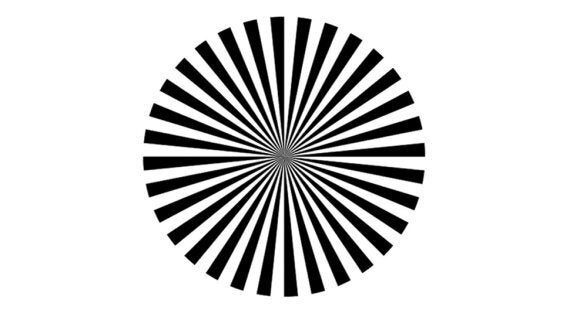Normally an optical illusion will boggle your mind a little or let you see a 3D image of a dolphin - this one is apparently very, very different.
No less an authority than two neuroscientists claim this image will actually let you see your own brain waves.
Stare at the pinwheel for a few seconds then look at a spot slightly away from it.

It also works as an afterimage
You should be able to see the centre of the pinwheel flicker when it's in your peripheral vision.
Only this is more than just a pretty effect - Rodika Sokoliuk and Rufin VanRullen from the University of Toulouse argue it's a representation of your brainwaves.
How do they know? Well they don't for sure but they theorise the flickering reflects the brain's alpha waves.
These are electrical fields generated in the brain that typically oscillate at around 10 Hz.
Story continues after slideshow...
When participants were asked to estimate the rate of flicker in the illusion by comparing to an actual flickering image, the average number was 9.1 Hz - pretty close to a typical alpha wave.
Of course this could be coincidental but the researchers are confident enough in their findings to conclude "this new flickering illusion is a unique way to experience the α rhythms that constantly occur in the brain but normally remain unnoticed".
Not everyone is convinced. In a blog for Discover Magazine, 'Neuroskeptic' argues it is not a smoking gun:
This is an extremely cool set of experiments, but to my mind they haven’t yet shown a ‘smoking gun’ which proves that the flicker really is alpha, as opposed to being something that happens to provoke alpha, and be of roughly alpha frequency.
Perhaps a smoking gun would be to show a correlation between an individual’s own alpha frequency (these, we know, differ between people, but are very stable for each individual) and that person’s perceived flicker rate.
Either way, it's a nice little illusion and a very cool theory that's well worth a follow up.